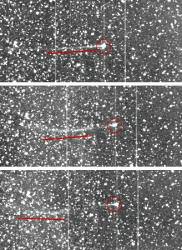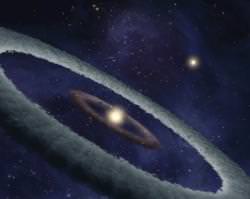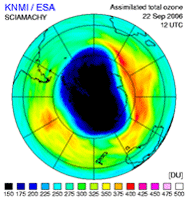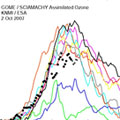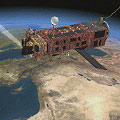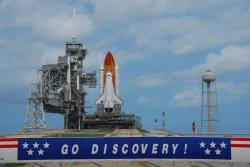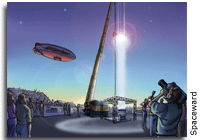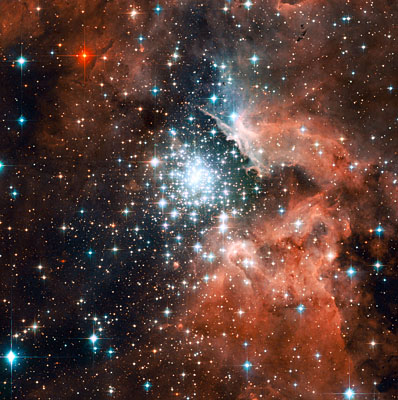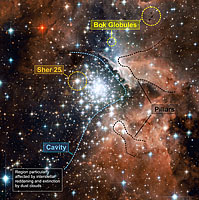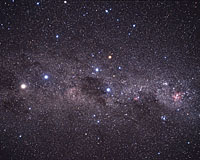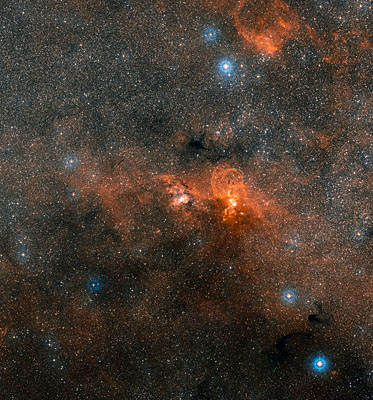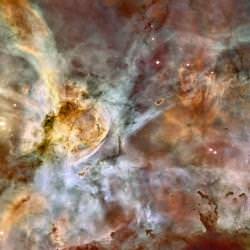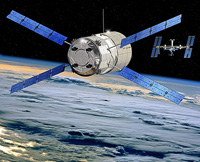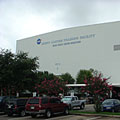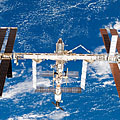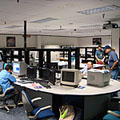 | By Tariq Malik Staff Writer posted: 04 October 2007 7:00 a.m. ET |
Fifty years ago today, a small satellite -- the world's first built and launched by humans -- rocketed into orbit, beaming down a series of beeps that heralded the coming Space Age to anyone listening on Earth.
The former
“It is the kind of the kind of thing that does not belong to just one country,” said veteran cosmonaut Yuri Malenchenko, who will launch to the International Space Station (ISS) next week with the Expedition 16 crew, of Sputnik’s legacy. “It belongs to humanity in general.”
Larger and more sophisticated machines followed Sputnik into space, some with creatures aboard and others with science instruments, and it was only a matter of time before humans catapulted themselves into that high frontier above Earth.
With the Soviet Union's successful launch of cosmonaut Yuri Gagarin on April 12, 1961, which sparked a race with the
"Here we are, for the first time, leaving our planet," former Apollo astronaut Edgar Mitchell told SPACE.com. "It's the beginning of a whole new epoch in human civilization."
Mitchell was on the winning side of the lunar space race between the
Sputnik's first flight and the advancements that led to Gagarin's launch and NASA's Apollo landings marked a pivotal point for human exploration, one that has led to a permanent presence for astronauts aboard the ISS, he said.
"It's about as important as when the Phoenicians first started paddling across the Mediterranean and the South Sea islanders first started in their outrigger canoes across the Pacific Ocean," Mitchell said.
From national to international
But human space exploration was initially driven by political pride and technological prowess, not pure science and wonder, former spaceflyers recalled.
"What motivated us…to go to moon was the advancing nature of the
Since Gagarin's first flight, 462 men and women have launched into space and 21 have lost their lives aboard spacecraft on Earth or in flight. But it wasn’t until July 17, 1975 that two spacecraft from different nations – former rivals the Soviet Union and the
Three spaceflyers -- Russian cosmonauts Fyodor Yurchikhin, Oleg Kotov and
"I think it's very important that we work together,"
Momentum lost
NASA is once more trying to reach out to the moon by retiring its three remaining space shuttles in 2010 and reviving the capsule-based spacecraft concept from its Apollo era to ferry astronauts back to the lunar surface by 2020.
"We had the potential, when we got back from the moon in the Apollo days, to start building the technology…to get on with it and go to Mars," Apollo 12 lunar module pilot Alan Bean told SPACE.com. "I thought in my lifetime I might see people on Mars; certainly I would see them training and getting ready to go."
But, explained Bean, cultures and countries rarely live up to their potential due to the shifting nature of interest, funds and priorities between generations.
"I'm not discouraged by it," Bean said, but stressed that NASA will likely need more definite funding if it is to succeed in returning astronauts to the moon by 2020, let alone reaching out beyond lunar exploration.
Continued cooperation among different countries, Malenchenko added, will also be vital to the success of the ISS and future missions to the moon and Mars.
On Oct. 10, Malenchenko – who commanded the ISS in the past – will launch toward the space station aboard a Russian Soyuz spacecraft from Baikonur Cosmodrome in
Whitson and Malenchenko, the space station’s core crew of Expedition 16, will relieve Yurchikhin and Kotov aboard the orbital laboratory.
Astronauts from Europe and
“That would be the way to go in the future as well,” he added.
